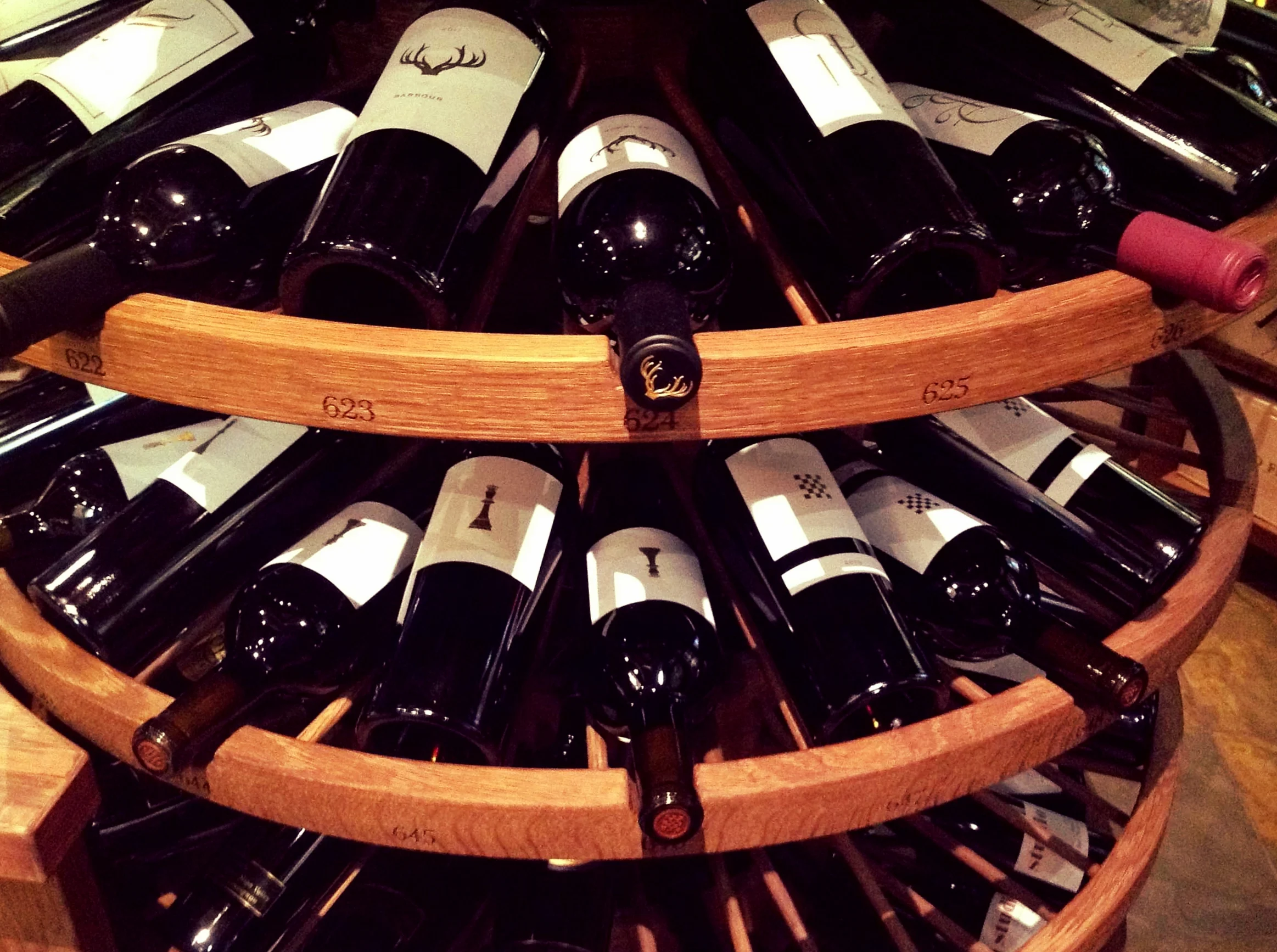Whether you have out grown your under counter wine fridge or are tired of looking at the cases of wine stacked in your basement, a wine cellar can be a fun and important ally in your collecting endeavors.
As your wine palate evolves and you travel to wine producing regions of the world, the bottles and cases you bring back will become a part of that memory. So it is important that when you finally open those fine wines, the first scent and aroma takes you back to that tasting room experience and not to the kitchen sink to pour it away. Some wines can be enjoyed the day you buy them. Others will need some time to age and to allow the subtleties to maturate. Think of your wine as meditating in the cool dark stillness of your wine room until it reaches the enlightenment of flavor and complexity the winemaker intended. Heat, Light and vibration are all detrimental to your wine. This is why it is important to properly store your wine in its own space.
“Think of your wine as meditating in the cool dark stillness of your wine room until it reaches the enlightenment of flavor and complexity the winemaker intended.”
Before you begin constructing a wine cellar, there are some important considerations to plan for. A qualified wine cellar consultant can help you with the room preparation, racking and cooling. Proper preparation of the cellar space is essential for keeping the room sealed and prevent mold or mildew issues from occurring. Here are some steps to assist you in your planning.
- Entrance: Your wine room door is the first thing seen by yourself, friends and family who will enter the room. It should be of an enticing design, to act as an invitation into the space. Wood doors should be at least 1 ¾” thick with an exterior jamb and door sweep. If there is a glass panel then it should be an insulated unit, sealed into the wood structure of the door. Metal and or glass doors can also add appeal as the room’s entry. Taking these measures for your cellar door ensures that your cellar's temperature and humidity is properly regulated so no air can escape through allowing your cooling system to not work as hard.
- Design: First determine your current taste and collection of wine. Anticipate what type of wine you may buy in the future to insure that the room and racking spaces will hold a variety of different sized wine bottles. Case storage should also be a consideration (wood cases only). Have your designer provide drawings, renderings and samples to help you envision the space before you begin. Cost breakdown will help you with your budget and design decisions. Remember the wine you will be aging will cost more than the racking, so it is best to make the long lasting choice and give your wine a properly designed resting place.
- Suitable Walls: In contrary to popular belief, the standard drywall will not hold up to the conditions of a wine room, therefor a water resistant wallboard such as ‘purple board’ should be used to cover the framing and insulation. Seams and corners can be taped with drywall mud and then the room should be primed and painted with a latex paint to seal the drywall. Should your room have stone brick or tile accent features than ½ cdx plywood or wonder board would be appropriate.
- A Strong Seal: A 6 mil plastic vapor barrier should be placed on the hot side of the walls, ceiling and floor, if floor is above another space. This acts to keep moisture from condensating inside the walls, which will lead to mold. If you cannot put the vapor barrier on the hot side, then the vapor barrier must be placed over the studs and in the spaces between the studs of the framing Duct tape should be used on all seams or openings. Then R-19 insulation or greater, can be placed into the spaces between the studs. Another option is spray-in foam, which will seal any gaps.
- Illuminating the Space: Since standard lighting puts off heat, we recommend using LED light in the room. This can be placed, tastefully in accordance with your racking design, in the ceiling or as chandeliers or sconces. There are a variety of hues available when choosing LED lighting, which ensures that you get the desired color and feel in the room despite not using standard light bulbs.
- Framing: Depending on whether your space is new construction or an existing room, the framing should be deep enough to allow for proper insulation. Walls that are 2”x 6” deep are preferred but 2” x 4” walls can work with sprayed in foam. Some walls will be a foundation of the home and these can have furring added or another material such as stone applied directly. Power supplies and electric lines should be run after the framing is complete
- Flooring: Your choice of flooring material sometimes depends on the interior details of the wine racking or decor of adjacent rooms. Often times the flooring you choose can help or hurt to proficiency of your cooling unit, or sometimes remove the need for one completely. Flooring choices like stone, tile, concrete, brick are most commonly used, although some type of wood floors can also be used, such as reclaimed wine barrel flooring, as well as reclaimed cork. Both of those method can be used as well on other surfaces such as counter tops and decanting areas.
- Safe Temperature: Most wine rooms are kept at 55 degrees Fahrenheit and 60% - 65% humidity. Some cooling units regulate the humidity while others do not. Your wine cellar designer can help you determine how to best address a cooling system based on the needs of your room. The units are sized to handle the specific cubic footage and it is important to increase the size of the unit if you have large areas of glass that will dissipate the temperature. Most units now have digital controls and bottle probes that help regulate the temperature of the liquid inside the bottle.
You can now safely collect more memories and know that you have another beautiful place to store them.
- Racking: Redwood ladder style was previously the most prominent wood racking type, but new innovative designs have been trending on the market. Exotic hardwoods, reclaimed wine barrels, metal, acrylic and stone have all been used alone or mixed together to achieve a more appealing design. The main purpose of the racking it to allow each bottle to rest undisturbed until ready for enjoyment. It is also a way to display your investment and keep track of the location of a specific bottle of wine you may want with dinner. There are many different type and sizes of bottles so consider what type of racking will allow proper airflow around every type of bottle. I strongly recommend not using stains or finishes that can outgas VOC’s (Volatile Organic Compounds) which can be absorbed by the cork and ruin your wine. At Savante we use proprietary coloring methods and natural non-toxic butcher-block type oil to finish our woods.

